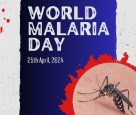
Patient’s breath could hold key to a more precise Covid diagnosis: Study
PTI, Mar 7, 2023, 11:57 AM IST

Credit: iStock Photo
A patient’s breath might hold the key to a more precise diagnosis of COVID-19, including that of its variants, and of non-Covid illnesses, suggested a new study.
Investigators from the University of Michigan’s Max Harry Weil Institute for Critical Care Research and Innovation, US, used portable gas chromatography (GC) to examine breath samples collected during the pandemic’s Delta surge and its transition to Omicron, from April 2021 to May 2022, the study said.
The results showed that the GC technology could diagnose COVID-19 with a high level of accuracy.
They also revealed that the volatile organic compounds contained in the breath of patients with Omicron differed from those in patients with Delta and earlier variants.
These molecular-level differences, according to the team, could potentially be used to distinguish between COVID-19, its variants and non-COVID illnesses.
The emergence of new COVID-19 variants has led to reduced accuracy across current rapid testing methods, the study said.
The results are published in the Journal of the American Medical Association (JAMA) Network Open.
”Exhaled breath contains hundreds of VOCs, which the body produces in response to infection and inflammation,” said principal investigator and study author Xudong (Sherman) Fan, associate director of the Weil Institute.
”Early in the pandemic, we used GC technology to discover and define sets of variants of concern (VOCs) for detecting COVID-19. However, we needed to gain a better understanding of how dynamically emerging variants impact this technology,” said Fan.
The team of researchers conducted a diagnostic study of 167 adult patients in the Michigan Medicine ICUs and emergency department.
They collected 205 breath samples from symptomatic and asymptomatic patients in 3 cohorts: 1. COVID-19 (2021): Patients with COVID-19 who were recruited before December 14, 2021 and were assumed to be infected by the Delta or earlier variants 2. COVID-19 (2022): Patients with COVID-19 who were recruited from January 2022 to the end of May 2022 and were assumed to be infected by the Omicron variant 3. Non-COVID-19 illness: Patients who were COVID-19 negative at the time of breath analysis, as well as patients who were previously COVID-19 positive but had recovered Using a novel point-of-care GC device developed by Fan and the team, in combination with an advanced biomarker discovery algorithm and data analysis platform developed at the university, the investigators defined four sets of VOCs that they were able to distinguish between COVID-19 (2021) and non-COVID illness.
They were able to differentiate these VOCs between COVID-19 and non-COVID illnesses with a sensitivity of 92.7 per cent, a specificity of 95.5 per cent and an accuracy of 94.7 per cent, the study said.
However, when the team applied the same VOCs in a setting of presumed Omicron, sensitivity decreased drastically to 60.4 per cent, they said.
”We already knew clinically that different strains of SARS-CoV-2 can act quite differently,” said study co-author Robert Dickson, deputy director of the Weil Institute.
”This decrease in performance supports our suspicion that their effects on lung biology are quite different as well,” said Dickson.
Based on their findings, the team hypothesized that it could be possible to use breath analysis to distinguish between COVID variants.
They undertook additional biomarker searches and defined new VOCs to discern between Omicron and Delta, Omicron and non-COVID illness, and between patients with COVID-19 and non-COVID illness regardless of variants, they said.
The combined analysis resulted in the ability to detect COVID-19 infected patients, regardless of variant, from non-COVID patients with a sensitivity of 89.4 per cent, a specificity of 91 per cent and an accuracy of 90.2 per cent, the study said.
This performance is close to that of RT-PCR tests, the gold standard, and better than many rapid antigen tests, the study said.
”This work suggests that breath analysis using point-of-care GC may be a promising method for detecting COVID-19 and similar diseases that result in VOC production,” said co-author and co-principal investigator Kevin Ward, executive director of the Weil Institute.
Udayavani is now on Telegram. Click here to join our channel and stay updated with the latest news.
Top News
Related Articles More

World Malaria Day: WHO calls for equitable health access

What role does genetics play in breast cancer? How can genetic testing help with early breast cancer diagnosis?

Father’s diet can affect anxiety in sons, metabolism in daughters: Study in mice finds

Low back pain, depression, headaches main causes of poor health: Study

Surgical options for Parkinson’s disease
MUST WATCH
Latest Additions

Low voter turnout in Karnataka: Only 38.23% cast votes in 14 LS segments during first half of the day

Karnataka Polls: No Modi wave but anti-BJP wave, says CM Siddaramaiah

Cal HC directs NIA to file report on clashes in Murshidabad over Ram Navami celebrations

Bengaluru goes to poll amid heat wave-like situation

Karnataka officials don vibrant sarees to promote voter participation






















